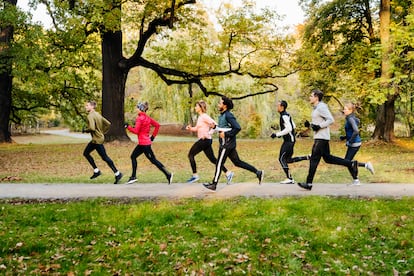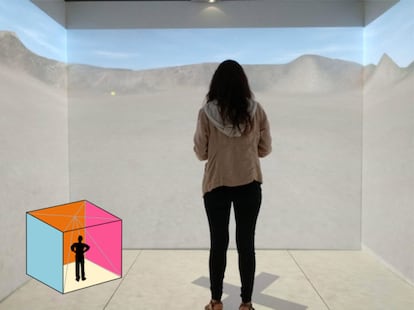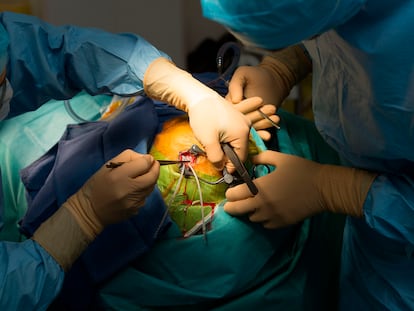How doing physical exercise can help improve memory
Research proves that 25 minutes of physical activity is enough to improve spatial memory

It has already been shown that physical activity helps prevent cognitive decline, but now an Argentine study goes one step further to try to prove that it could even create new brain cells in adulthood.
Neuroscientists and technologists proved that even sedentary people improved their spatial memory after doing 25 minutes of exercise on an exercise bike. In fact, physical activity is also an excuse to show that this effort can contribute to generating neurons. “We based our study on a type of spatial memory called “Patterns Separation” that is developed in the dentate gyrus, in the hippocampus region of the brain, where spatial memories are processed. It is the only place in in mammals’ brains, where it is believed that neurogenesis (the creation of new neurone) may occur. So, what we were trying to look for is a spatial memory that indirectly works better if there is neurogenesis,” neuroscientist and co-director of the study Fabricio Ballarini explains. The scientist works at the Technological Institute of Buenos Aires and the Institute of Cellular Biology and Neurosciences of the University of Buenos Aires.
The key is Brain Derived Neurotrophic Factor (BDNF), a protein related to the growth and health of neurons that also increases when you do physical exercise. This had already been demonstrated in mice more than a decade ago, and now the experiment could be adapted to humans. It is all thanks to virtual reality, in which researchers from the National Scientific and Technical Research Council (CONICET) and the National University of the Center for the Province of Buenos Aires (UNICEN) participated. Spatial memory, which records information about the environment and the location of objects, deteriorates with aging and Alzheimer’s disease, so it is important to study simple ways to improve it.
“For ethical reasons, molecular aspects cannot be analyzed when studying in humans, so we must observe the behavior of memory,” Ballarini explains. It is one of the central dilemmas of neuroscience: whether or not neurons can be born in adulthood. The researcher says: “The central dogma, especially in mammals, is that we are born with a supply of neurons that die and new ones do not replace them. To know this, a permanent camera would have to be installed to detect the exact moment a neuron is born. That’s impossible. We can only know indirectly if this is the case. Therefore, our central hypothesis is that if people do physical activity, BDNF levels rise.”
If that happens, the researchers believe it should be reflected in better spatial location performance that is only processed in the dentate gyrus, where neurons are made. “What we are looking for is some indirect evidence that there could be neurogenesis in humans and that this is triggered by exercise. Ultimately, the objective is to demonstrate that physical activity creates new neurons,” says the neuroscientist, who is a popular scientist in Argentina. In fact, part of the financing for this study benefited from his activity as a science communicator, in addition to some technology transfer funds from UNICEN and his salary from CONICET.
A memorable cave
In the study, a group of 98 volunteers aged between 18 and 40 years old entered a Computer Assisted Virtual Environment (CAVE), in which a desert landscape was projected on the walls and floor to totally immerse the subjects. There, they had to observe carefully and try to memorize the location of a series of flags. They could move virtually with a joystick, like in a video game, and make use of the clouds or a few mountains as landmarks. The artificial environment allowed them to keep stable environmental variables that, in a natural context, would have been altered by factors such as wind, sunlight, temperature, or interference from animals.
The projections also allowed “not having to wear anything, like a helmet, so that it was more similar to reality,” according to Dr. Cristian García Bauza, coordinator of the laboratory in which the tool was developed. When they left the experiment, the participants were randomly separated into two groups, which were a mix of athletes and more sedentary people. One group did physical activity on an exercise bike for 25 minutes, and the other that sat down and watched a video of a cycling race.
This was done so the scientists could distinguish the mental sensation of doing physical activity from the brain effects of actually doing it. Twenty-four hours later, according to UNICEN researcher Florencia Rodríguez, both groups returned to the CAVE to check if they were able to locate the flags they had seen in the first stage on their own. The result was that all of the group who had done physical exercise, were able to correctly locate them in space, while those who had only watched a video of a race did not achieve that goal.

Finding alternatives to drugs is another of the neuroscientific team’s motivations. “What we are very interested in is finding issues that connected with external stimulations that can help memory. From the age of 40 or 45, we begin to see memory deficits in healthy people and even more so in an aging population. In some countries, at the end of the century there will be a huge number of adults with cognitive problems, both in the economically active and inactive populations,” says Ballarini.
For this reason, he explains, his search is based on finding specific tools. For example, if a person wants to strengthen a memory, such as when studying something, they could follow certain steps such as being surprised, going to a specific place, taking a nap, or doing physical activity. These are something that is a product of understanding how the brain works. “We tested it with spatial memory, and now we will try it with something that has nothing to do with spatial memory. We will guide the brain towards a memory generator,” he adds.
Although this study is not sufficient on its own to definitively conclude that physical exercise creates neurons, it does represent a significant step towards that goal.
Sign up for our weekly newsletter to get more English-language news coverage from EL PAÍS USA Edition
Tu suscripción se está usando en otro dispositivo
¿Quieres añadir otro usuario a tu suscripción?
Si continúas leyendo en este dispositivo, no se podrá leer en el otro.
FlechaTu suscripción se está usando en otro dispositivo y solo puedes acceder a EL PAÍS desde un dispositivo a la vez.
Si quieres compartir tu cuenta, cambia tu suscripción a la modalidad Premium, así podrás añadir otro usuario. Cada uno accederá con su propia cuenta de email, lo que os permitirá personalizar vuestra experiencia en EL PAÍS.
¿Tienes una suscripción de empresa? Accede aquí para contratar más cuentas.
En el caso de no saber quién está usando tu cuenta, te recomendamos cambiar tu contraseña aquí.
Si decides continuar compartiendo tu cuenta, este mensaje se mostrará en tu dispositivo y en el de la otra persona que está usando tu cuenta de forma indefinida, afectando a tu experiencia de lectura. Puedes consultar aquí los términos y condiciones de la suscripción digital.










































